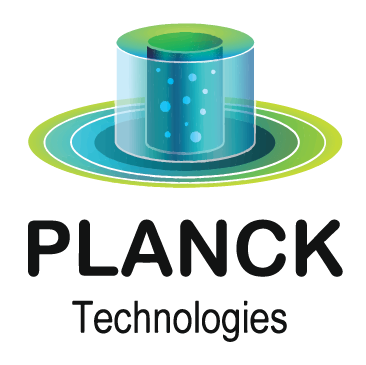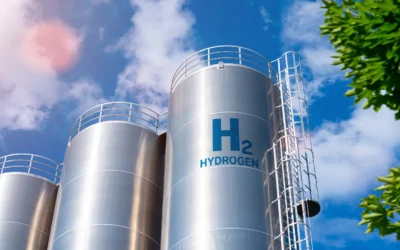Maryam Ghadrdan, Founder & CEO of Planck Technologies, explains how innovative storage solutions are key to the energy transition.
What is the problem that your company is solving?
At Planck Technologies, our passion is to contribute to the green transition by paving the way for the adoption of more renewable energy solutions. We believe that the key to this transition is making energy storage solutions economically viable, safer, and more efficient.
Many existing energy storage technologies are heavily influenced by the materials used in their construction, and we see a significant opportunity to enhance these technologies with advanced materials.
Our focus is on chemical-based, long-duration energy storage (LDES), specifically targeting the challenges of gas storage. We recognize the urgent need for better storage technologies that require less infrastructure and offer improved safety. By developing innovative gas storage solutions, we aim to make renewable energy storage not only more practical but also more scalable, thereby supporting the broader adoption of renewable energy across industries and regions.
Buffer storage for Hydrogen and P2X systems [Power-to-X describes a range of technologies that use renewable electricity to create other forms of energy or raw materials] are the areas we want to be active in. One of the most promising molecules in the context of LDES is hydrogen, which exhibits an excellent gravimetric energy density of 33.6 kWh/kg. However, the volumetric density of hydrogen is markedly low, necessitating compression and storage under relatively high pressures of approximately 250 to 700 bar. An alternative method for increasing the volumetric density of hydrogen is to liquify it, which requires cryogenic temperatures. These storage systems are not only costly but also require significant energy for operation. It is therefore desirable to have alternative storage options which operate at significantly lower pressures and moderate temperatures.

What technology/innovation are you bringing to this field?
Planck Technologies is bringing advanced materials technology to the field of energy storage, specifically focusing on chemical-based, long-duration gas storage solutions. Our innovation lies in the development and integration of cutting-edge materials, such as Metal-Organic Frameworks (MOFs), Covalent Organic Frameworks (COFs), and other porous materials, to enhance the efficiency, safety, and economic viability of gas storage systems.
We utilize computational screening and AI tools to identify and design advanced materials with optimized properties for specific gas storage applications. This approach allows us to tailor materials that meet precise requirements, such as high adsorption capacity, stability under operational conditions, and scalability.
Unlike traditional methods, where materials are developed in isolation from their applications, we integrate the entire value chain from the outset. This means we start with the specific needs of the end-user and design materials that are directly aligned with these needs, ensuring that our storage solutions are practical, efficient, and cost-effective.
What stage of commercialization are you at? Who are your backers?
Planck Technologies is currently in the advanced development stage of commercialization. We have developed a comprehensive material screening model for advanced materials, integrating it with our system model. Our focus has been on refining the technology, particularly the application of advanced materials for gas storage. We have established collaborations with research centers, such as NMBU, IFE and SINTEF in Norway, to test these materials in real-world adsorption systems. We have also been invited to consortiums for European projects.
Key Milestones Achieved:
- Technology Development: We have developed and refined our advanced materials screening model and are actively working on integrating it with broader system models to assess energy consumption, economic viability, and environmental impact.
- Partnerships and Collaborations: We have secured partnerships with research centers and are engaging with industrial stakeholders to pilot our technology and validate its performance under real-world conditions.
- Patent Filing: We are in the process of filing a patent for our innovative tank design, which is a critical component of our gas storage technology.
Next Steps:
- Pilot Projects: We are focusing on piloting our advanced gas storage solutions with key industrial partners to demonstrate their practical viability and scalability.
- Commercial Partnerships: Our efforts are concentrated on forming strategic partnerships with industry players to accelerate commercialization and bring our technology to market.
As of now, we have been supported by a combination of angel investment, internal funding, grants, and strategic partnerships with research institutions. Innovation Norway and the Innovation department in Akershus Municipality are supporting our development.
We are actively seeking additional investment and partnerships to further scale our technology and accelerate its path to full commercialization. Our goal is to engage with investors and industry leaders who share our vision of advancing sustainable energy storage solutions.

The Planck Technologies leadership team.
How does your product or service contribute to environmental sustainability?
At Planck Technologies, we contribute to environmental sustainability in several significant ways:
- Reducing Greenhouse Gas Emissions:
- Enhanced Renewable Energy Storage: By developing advanced gas storage solutions, particularly for hydrogen, we enable more effective and scalable storage of renewable energy. This directly supports the increased use of renewable energy sources, such as wind and solar, by ensuring that excess energy can be stored and used during periods of low generation, thereby reducing reliance on fossil fuels and lowering greenhouse gas emissions, an ESG environmental focus (SDG 7: Affordable and Clean Energy, and SDG 13: Climate Action)
- Improving Energy Efficiency:
- Energy-Efficient Storage Technologies: Our focus on materials that allow for gas storage under milder conditions—such as lower pressures and moderate temperatures—results in storage systems that consume less energy during operation. This contributes to overall energy efficiency and reduces the carbon footprint associated with energy storage infrastructure, which is another ESG goal (SDG 12: Responsible Consumption and Production).
- Minimizing Environmental Impact:
- Environmentally Friendly Materials: We prioritize the development of materials and synthesis methods that minimize environmental impact. This means we implement the safe and sustainable by design practice, and put our efforts to minimize the environmental footprint of our storage solutions (SDG 12).
- Supporting the Hydrogen Economy:
- Facilitating Hydrogen Adoption: Hydrogen is a clean energy carrier that produces only water as a byproduct when used. By making hydrogen storage more practical, safe, and economical, our technology supports the broader adoption of hydrogen as a key component of a sustainable energy system. This contributes to reducing emissions in sectors where electrification alone may not be feasible, such as heavy industry and transportation (SDG 7, 13, 9: Industry, Innovation, and Infrastructure)
- Resource Optimization and Life Cycle Considerations:
- Life Cycle Assessment: We incorporate life cycle assessments (LCA) into our development process, considering the full environmental impact of our materials from raw material extraction through to end-of-life. This helps us to identify and mitigate any potential negative environmental impacts, ensuring that our solutions are sustainable throughout their entire life cycle.
By developing innovative storage technologies, we contribute to building resilient infrastructure, promoting inclusive and sustainable industrialization, and fostering innovation (SDG 8). This, of course, calls for strong collaboration between different stakeholders. Our approach is to form partnerships with research centers, industrial stakeholders, and other organizations. This aligns with the goal of strengthening partnerships (SDG 17) to achieve broader sustainability objectives.

Representation of a metal organic framework from phys.org. MOFs are a class of porous materials consisting of metal ions or clusters coordinated to organic ligands to form one-, two-, or three-dimensional structures. They can store gas.
What are the key challenges that you face?
As a new startup, Planck Technologies faces challenges similar to those encountered by other emerging ventures, particularly in building credibility and navigating market entry. Establishing trust and recognition in the energy industry is important for us, and we must effectively communicate the unique value of our solutions to differentiate ourselves.
The journey from developing a Minimum Viable Product (MVP) to achieving wide market adoption requires carefully planned, incremental steps. We are focused on proving the effectiveness of our technology through pilot projects and early collaborations, which will serve as critical proof points in demonstrating our capability to deliver real-world results. Success in these initial stages will help us build the credibility needed to gain broader acceptance and gradually expand our market presence.
By strategically approaching market entry and adoption, we aim to transition from a promising startup to a key player in the energy storage sector, ultimately realizing the ambitious goals we have set for our company.
What do you need to overcome them?
To overcome these challenges, we recognize the importance of proactive engagement with industrial stakeholders from the very beginning. Rather than waiting for the perfect moment, we are committed to building relationships early on, collaborating with key players in the industry, and integrating their feedback into our development process.
By engaging with stakeholders and potential partners at an early stage, we can create awareness about our innovative technology and its potential benefits. This early visibility is crucial, not only for refining our solutions based on real-world needs but also for securing future offtakers and partners who will be essential for scaling our technology.
Additionally, we need to invite investors who share our passion for solving climate issues. These investors can assist us not only through funding but also by leveraging their networks to help us reach new markets and opportunities. We are currently fundraising and would love to discuss further with interested parties who are eager to support the transition to a sustainable energy future.




